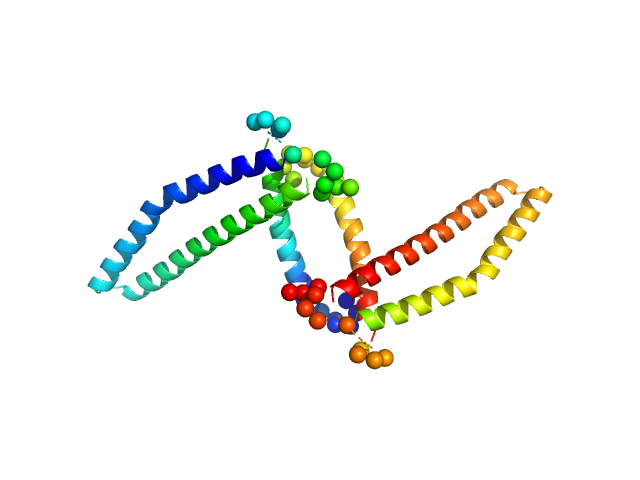| MWexperimental | 26 | kDa |
| MWexpected | 26 | kDa |
| VPorod | 50 | nm3 |
|
log I(s)
9.81×101
9.81×100
9.81×10-1
9.81×10-2
|
 s, nm-1
s, nm-1
|
|
|
|

|
|

|
|
Synchrotron SAXS
data from solutions of
Der p21
in
10 mM Hepes , pH 7
were collected
on the
EMBL X33 beam line
at the DORIS III, DESY storage ring
(Hamburg, Germany)
using a MAR 345 Image Plate detector
(I(s) vs s, where s = 4πsinθ/λ, and 2θ is the scattering angle).
One solute concentration of 4.70 mg/ml was measured
at 10°C.
Two successive
120 second frames were collected.
The data were normalized to the intensity of the transmitted beam and radially averaged; the scattering of the solvent-blank was subtracted.
Wavelength = UNKNOWN. Sample detector distance = UNKNOWN
Tags:
X33
|
|
|||||||||||||||||||||